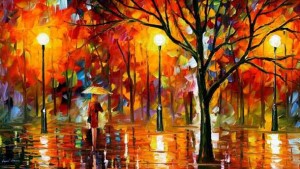Learn the Oil Painting Technique: Broken Color
Broken color was first used by Monet and the Impressionists in 19th century French painting, where color was applied in small dabs of paint compared to the traditional method of smoothly blending colors together. This method results in more of a “patchwork” effect, where the dabs render the facets of light on forms, and/or the planes of the forms’ volume, by means of color and value. Broken color has continued to be used in much modern and contemporary painting.
Impressionist painting characteristics include relatively small and thin, yet visible brush strokes or dabs, with emphasis on accurate depiction of light in its changing qualities. Illusion of movement is a crucial element of human perception and experience, wherein the image seems to move in different visual angles.
The length of brushstrokes can vary from painting to painting depending on your mood as a painter. You do not blend any of these brushstrokes. Each brushstroke is allowed to remain separate. Cleaning your brush frequently is one tip to allow a clean color with thick paint. The tendency is that the viewer will “visually mix” these brushstrokes to view a whole image.
Using this method, small quantities of different colour are placed close together. When viewed from a distance, the eye interprets these mixed colours in the same way it would if they were physically combined on the palette before applied to the canvas. The surface area a certain colour occupies determines its intensity.
Another technique is to dip perhaps one corner of the flat brush into one color pigment on the palette then the other corner holds paint of a different color, and then is applied to the surface. There are variations of how to apply the effect but the idea is that the eye blends this and sees an impression of the color suggested.
The simplest way to create a broken color is to add to any hue a certain amount of its complementary, or a bit of one of the hues lying to the right or to the left of its complementary. This will allow the viewer to mix the colors on their own.
The term broken color may take on a clearer meaning if, for “broken,” we substitute the word damaged or diminished. Strictly speaking, a broken color is one that emerges from a tug of war with other color particles or semi-chromes in its body. The only flaw in the broken colour method is that you won’t appreciate the painting at a close distance. The portrait looks a lot different when viewed from a few metres than a few centimetres.
Image source: Colourful paintings by Leonid Afremov www.demilked.com


i love the paintings on this page!! thanks